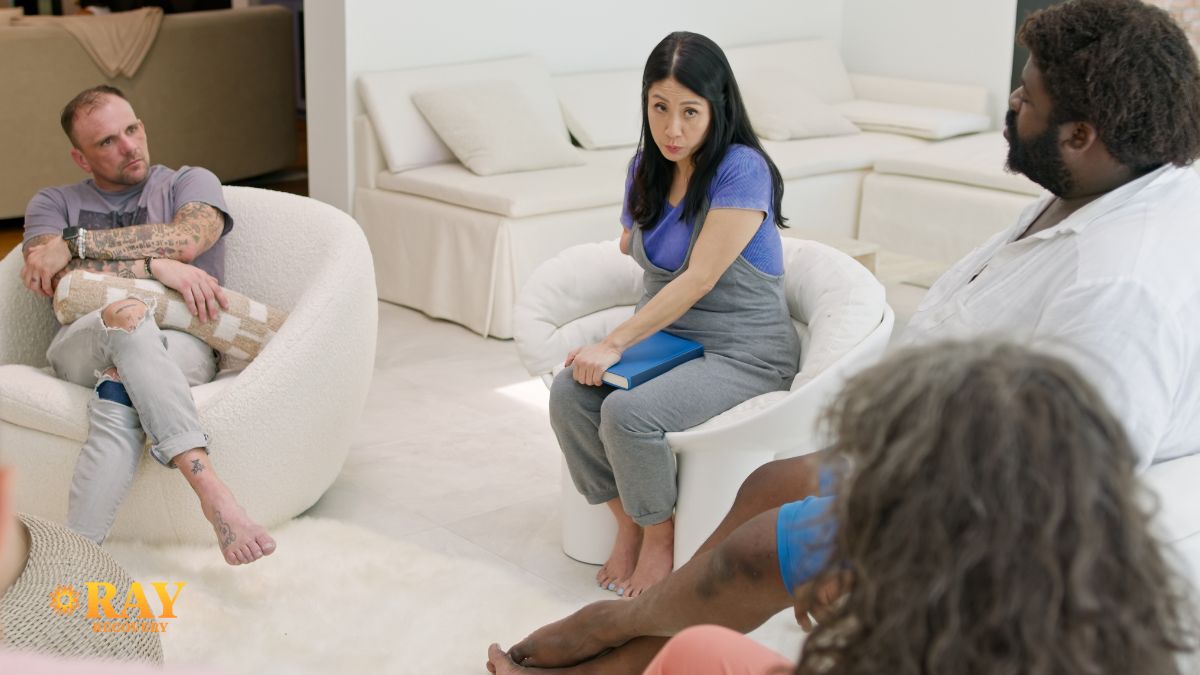Key Points:
- Choose the right outpatient rehab by matching your goals, risks, and schedule to PHP, IOP, or OP. Confirm therapy formats, MAT access, and aftercare.
- Verify insurance, hours, and staff credentials.
- Commit to all sessions in the first two weeks to build recovery momentum.
Recovery decisions feel urgent when cravings, work, and family pull in different directions. Outpatient treatment gives structure without leaving home or job. The sections below show how to compare levels of care, vet therapy and medication options, and plan for life after treatment. Use these steps to choose outpatient rehab program options that actually fit your goals.

Step 1: Clarify Goals and Risks Before You Tour Programs
Goals could be sobriety from alcohol, reduced opioid use with medication, or full abstinence plus mental health support. Risks include recent overdose, severe withdrawal history, or unsafe housing. Strong support at home helps outpatient care; limited support may point to more intensive hours.
Treatment access remains tight. Among people who needed substance use treatment in 2023, only 23.6% received it; 85.4% of those with a recent substance use disorder did not receive care. Use this reality check to move from “maybe later” to an actual plan.
Use these prompts to get specific:
- Define success: State the first 30-day goal in one sentence.
- Flag risks: List three triggers you face weekly and how you will handle each in therapy.
- Identify support: Name two people who can help with rides, reminders, or childcare.
Work this prep into your first calls when choosing a rehab facility so staff can match you to level and services quickly.
Step 2: PHP vs IOP vs OP: Which Level Fits Your Week?
Levels differ by weekly therapy hours and intensity.
- Partial Hospitalization Program (PHP) usually runs most weekdays, often 20–30 hours.
- Intensive Outpatient Program (IOP) offers a minimum of 9 hours per week for adults on a set schedule.
- Standard Outpatient (OP) is fewer hours, often 1–3 sessions per week.
Clarify the hours before you choose outpatient rehab program options so you can plan work and family time.
Compare by fit, not labels:
- PHP (most hours): Best when cravings feel constant or early stability is fragile.
- IOP (moderate hours): Best when you can practice skills between sessions and have safe housing.
- OP (few hours): Best for step-down care or mild symptoms with strong supports.
Programs should place you using ASAM Criteria, a widely used framework for level-of-care decisions that looks at six dimensions like withdrawal risk, living situation, and readiness to change. Ask how the program uses ASAM Criteria during intake and transitions.
When comparing rehab outpatient programs, confirm weekday, evening, or weekend groups. Make sure your ride plan and job schedule match the chosen level; if not, ask about telehealth options or different tracks.
Step 3: Therapies That Build Daily Skills
Cognitive Behavioral Therapy helps you map triggers and practice alternatives. Contingency Management rewards healthy behaviors. Family sessions align home rules and reduce conflict. Trauma-focused care is important if past events fuel current use.
Ask these therapy questions:
- Formats and frequency: Individual, group, and family; how often for each?
- Skill practice: What homework or daily practice will I do between sessions?
- Provider training: Who delivers trauma care or family work, and what training do they have?
Research shows ongoing support produces measurable, sustained benefits compared with stopping services after the initial program. Use this as a filter when you evaluate how to choose a rehab facility that will support you beyond discharge.
Step 4: Medication Options and Dual-Diagnosis Care
Medication-assisted treatment (MAT) for opioid use disorder, such as buprenorphine or methadone, cuts overdose deaths sharply.
One large analysis found overdose mortality 59% lower with methadone and 38% lower with buprenorphine compared with no medication. If opioids are involved, ask every program about same-week access to MAT.
Co-occurring depression, anxiety, PTSD, or bipolar disorder can stall progress if untreated. When you compare how to choose a rehab center, look for:
- Psychiatric prescribers who can meet within the first one to two weeks
- Integrated care where therapists and prescribers share a plan
- Crisis protocols for suicidality or severe anxiety
Ask how the team coordinates therapy, medication, and safety planning. Confirm onsite or partnered clinics if the program does not prescribe directly.
Step 5: Insurance, Costs, and Scheduling Without Surprises
Verify benefits before you set a start date. Provide your insurance details to each program’s benefits specialist and confirm:
- Deductibles and copays: Get dollar amounts in writing.
- Authorizations: Ask who secures pre-auth and how many sessions are approved at the start.
- Out-of-network options: Confirm written estimates and appeal routes if needed.
Block your calendar for the first two weeks. Protect group times like a medical appointment. If you need evening groups, say so up front. If you need telehealth, confirm the platform, privacy, and attendance rules. Use this step to choose outpatient rehab program logistics you can actually keep.

Step 6: Quality Signals You Can Verify
Quality shows up in documents and routines, not slogans. Ask for proof and look for consistency across staff answers.
Quality checklist:
- Licensing and accreditation: State license plus national accreditation (e.g., The Joint Commission or CARF).
- Outcome tracking: Programs should track retention, completion, and post-discharge follow-ups at 30/90 days.
- Qualified staff: Supervision hours, caseload size, and training in trauma and family therapy.
- Medication access: Clear pathways for MAT and psychiatric care.
- Safety policies: Drug screening, crisis response, and respectful discharge planning.
If answers vary by staff member, ask for a written summary. When choosing a rehab facility, consistency equals reliability.
Step 7: Build Your Aftercare Plan on Day One
Risk rises when treatment ends without a bridge. Plan the bridge now.
Aftercare components to secure early:
- Step-down level: Move from PHP → IOP → OP with overlapping appointments, not gaps.
- Peer support: Pick two weekly meetings or a recovery group you will attend for 8–12 weeks.
- Relapse plan: Define three early warnings and name who you will call for each.
Ask for check-ins at 30 and 90 days. Request a written schedule for the first two weeks post-discharge. Use these steps as you choose outpatient rehab program options so support continues when structure lightens.
Step 8: Red Flags That Save You Time
Avoid programs that:
- Guarantee outcomes or promise exact sobriety timelines.
- Hide costs or refuse to check benefits before intake.
- Dodge questions about staff credentials or supervision.
- Discourage medication for opioid use disorder without sound clinical reasons.
- Offer only lectures with minimal skill practice or individualized plans.
Trust programs that invite questions and provide written answers.
Step 9: Shortlist and Decide
Create a two-column table for your top three choices. Score each item from 1–5.
Scoring items:
- Level match: PHP/IOP/OP hours match your risks and schedule.
- Therapy mix: Individual, group, family, and trauma-focused care are available.
- Medication access: MAT and psychiatric care are integrated.
- Insurance fit: Costs and authorizations are clear.
- Outcomes: Program tracks completion and follow-up.
- Aftercare: Step-down and peer support are built in.
Choose the program that meets the most core needs, not the one with the fanciest brochure. If two choices tie, pick the one that can start you this week.
Step 10: Commit to the First Two Weeks
Early momentum sets the tone. Show up, complete homework, and text your support person after each session. Ask your therapist to review your top two triggers in week one. Schedule one family session in the first ten days if possible.
Keep your plan simple:
- Attend every session in the first 14 days.
- Practice one skill per day and write one sentence about how it went.
- Confirm aftercare by the end of week two.

Frequently Asked Questions
How does outpatient rehab work?
Outpatient rehab works by providing structured therapy while you live at home. After assessment, you’re placed in PHP, IOP, or OP based on need. Sessions include individual, group, and family therapy, plus case management and medication support. You practice skills between visits and reduce hours as stability improves.
How long is an outpatient rehab program?
An outpatient rehab program can last from a few weeks to several months. PHP typically runs 2–4 weeks, IOP lasts 6–12 weeks, and standard OP can extend for months with fewer sessions. Duration depends on progress, risk, insurance limits, and personal goals for recovery and daily life.
What is the difference between IOP and SOP?
The main difference between IOP and SOP is intensity. IOP provides at least nine therapy hours weekly with a structured schedule for moderate symptoms or early recovery. SOP offers fewer hours and more flexibility, used for step-down care or milder needs. Programs adjust levels based on progress and risk.
Put Your Plan Into Motion
Outpatient addiction treatment in Ohio can fit work and family while giving real tools for change. Medication-assisted treatment for opioid use disorder lowers overdose deaths by large margins, and IOP structure adds weekly practice time that keeps skills fresh.
Ray Recovery offers outpatient addiction treatment, including PHP, IOP, and OP, along with dual-diagnosis care and medication-assisted treatment. Reach out to start a personalized plan that fits your week and supports long-term progress. We will verify benefits, outline costs, and schedule your first two weeks so you know exactly what to expect.


